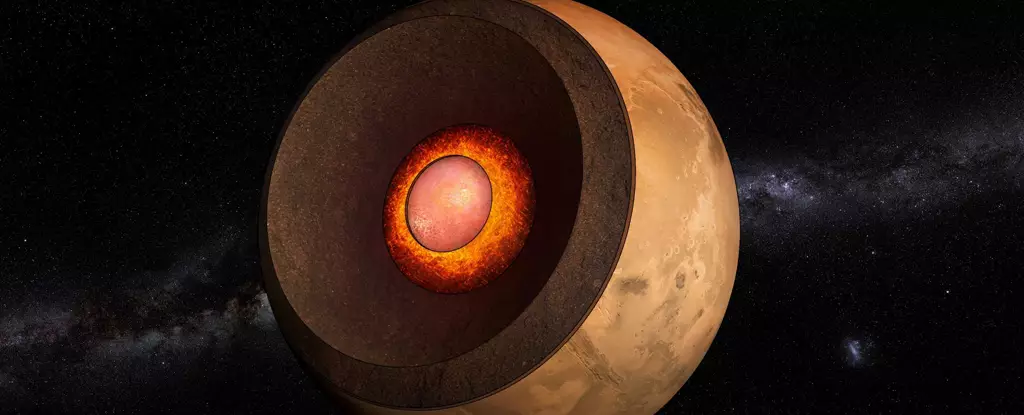Mars, the mysterious red planet, has been a subject of fascination for centuries. Over the years, humans have sent numerous missions to uncover the secrets of this celestial neighbor. One such mission, the Mars InSight lander, provided groundbreaking data about Mars’s interior structure. Contrary to popular belief, Mars is not just a solid, dusty shell. It is a layered planet with surprising squishiness hiding beneath its surface. This new revelation has far-reaching implications for our understanding of Martian history and how we interpret seismic data.
Mapping Mars’s Interior
Until the Mars InSight mission, Earth was the only planet whose interior we had been able to study using seismic data. InSight, operational for a few years, detected hundreds of quakes that rippled through Mars’s core. These seismic waves allowed scientists to probe the planet’s interior structure and create a detailed map. The initial findings were based on early data, but two new papers have expanded our knowledge further.
Geophysicist Amir Khan of ETH Zürich and geophysicist Henri Samuel of the French National Centre for Scientific Research (CNRS) led separate studies based on a much larger dataset, including seismic events caused by meteorite impacts. Previous measurements had suggested that Mars had a significantly large core, accounting for over half of the planet’s radius. This core was believed to contain a mix of lighter elements, resulting in lower density. However, Khan and Samuel’s research indicated a different story.
Analyzing the seismic waves, both research teams found evidence of a molten rock layer surrounding Mars’s core. This layer, approximately 150 kilometers thick, suggests a smaller core with a radius between 1,650 and 1,675 kilometers. These new estimates align with previous calculations before the InSight mission. A smaller core implies higher density, indicating a lack of lighter elements. This discovery brings Mars’s chemical composition more in line with our understanding, giving valuable insights into the planet’s history and evolution.
Decoding Mars’s Past
The composition of Mars’s core holds significant clues about the planet’s journey through time. The previous assumption of lighter elements in the core was linked to the loss of Mars’s global magnetic field. By debunking this hypothesis, scientists can now delve deeper into deciphering the red planet’s enigmatic past. Understanding the mechanisms that shaped Mars into its present state – a dusty, arid, and lifeless landscape – becomes an intriguing puzzle waiting to be solved.
Diverging Theories
While both research papers agree on the molten nature and size of the layer surrounding Mars’s core, they offer different explanations for its presence. These contrasting theories highlight the complexity of Mars’s past and the mysteries that still remain. Future research endeavors will be dedicated to unraveling these enigmas and narrowing down the history and evolution of the red planet.
The journey to uncover the secrets of Mars continues to surprise and fascinate us. The revelation of a layered, squishy interior challenges our preconceived notions of what lies beneath the planet’s dusty surface. Mars, once thought to be a solid barren world, now presents a complex history waiting to be unraveled. Through seismic data collected by the Mars InSight lander, we have attained a deeper understanding of the red planet’s interior structure. The findings of Khan and Samuel’s research shed light on Mars’s core and its composition, leading us one step closer to deciphering the mysteries of this neighboring world. As future missions and studies further explore Mars’s enigmatic past, we may finally unlock the secrets that have eluded us for so long.



Leave a Reply